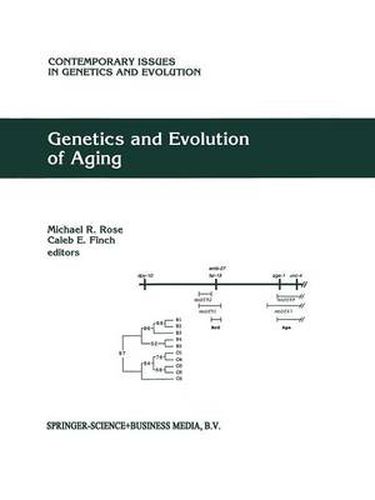Readings Newsletter
Become a Readings Member to make your shopping experience even easier.
Sign in or sign up for free!
You’re not far away from qualifying for FREE standard shipping within Australia
You’ve qualified for FREE standard shipping within Australia
The cart is loading…






This title is printed to order. This book may have been self-published. If so, we cannot guarantee the quality of the content. In the main most books will have gone through the editing process however some may not. We therefore suggest that you be aware of this before ordering this book. If in doubt check either the author or publisher’s details as we are unable to accept any returns unless they are faulty. Please contact us if you have any questions.
The study of aging has recently been transformed by the application of tools and ideas from genetics and evolution. This development began in 1980, and has since been gathering momentum. The present volume collects most of the principles contributing to this new direction in aging research. Additionally the book incorporates elements from both molecular genetics and evolutionary genetics, uniting two divergent strategies in the study of aging. Some of the book’s articles are more molecular, and some are more evolutionary in their orientation, some contributions combine both approaches in a way that has rarely been seen. The book will thus be of broad interest through all ‘levels’ of biology, from molecular biology to evolutionary biology. The phylogenetic diversity covered by the articles is also fairly great: from yeast to plants, nematodes to Drosophila, and rodents to man. Nonetheless, there is a unity to the treatment, with questions like mutation-accumulation, number of loci, and the possibility of postponing aging arising repeatedly throughout the discussions of particular taxonomic groups. There are few better starting places for graduate students interested in biological aging research than this volume. It is also a convenient collection for research workers in the area, who may need to track down an important idea or result. Finally, the book as a whole provides a bracing overview of biological aging.
$9.00 standard shipping within Australia
FREE standard shipping within Australia for orders over $100.00
Express & International shipping calculated at checkout
This title is printed to order. This book may have been self-published. If so, we cannot guarantee the quality of the content. In the main most books will have gone through the editing process however some may not. We therefore suggest that you be aware of this before ordering this book. If in doubt check either the author or publisher’s details as we are unable to accept any returns unless they are faulty. Please contact us if you have any questions.
The study of aging has recently been transformed by the application of tools and ideas from genetics and evolution. This development began in 1980, and has since been gathering momentum. The present volume collects most of the principles contributing to this new direction in aging research. Additionally the book incorporates elements from both molecular genetics and evolutionary genetics, uniting two divergent strategies in the study of aging. Some of the book’s articles are more molecular, and some are more evolutionary in their orientation, some contributions combine both approaches in a way that has rarely been seen. The book will thus be of broad interest through all ‘levels’ of biology, from molecular biology to evolutionary biology. The phylogenetic diversity covered by the articles is also fairly great: from yeast to plants, nematodes to Drosophila, and rodents to man. Nonetheless, there is a unity to the treatment, with questions like mutation-accumulation, number of loci, and the possibility of postponing aging arising repeatedly throughout the discussions of particular taxonomic groups. There are few better starting places for graduate students interested in biological aging research than this volume. It is also a convenient collection for research workers in the area, who may need to track down an important idea or result. Finally, the book as a whole provides a bracing overview of biological aging.